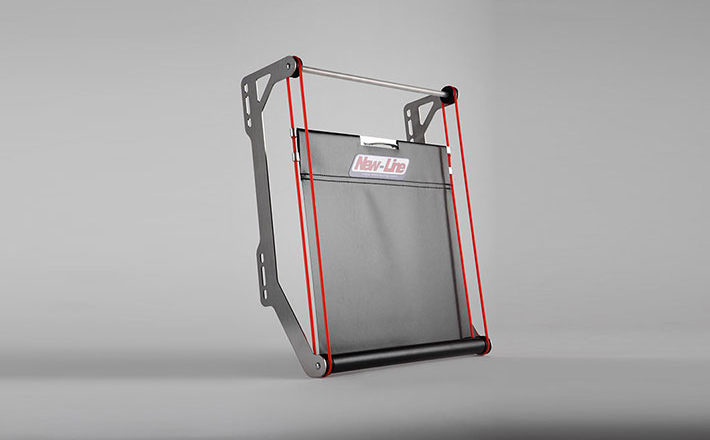How to manage the radiator during the cold season
In the winter, even though the days get shorter and there are fewer races, the pleasure of getting out on the track is still there. However, the colder air means that as the radiator completes its cycle, the engine runs the risk of being excessively cooled. New Line explains how to prevent this from happening.
What if, instead, you decide to garage the kart until spring… we explain how to store it.
Normally, during the summer, the radiator’s job is to cool the cylinder using water and air. However, in truth the real objective is to make sure that engine temperature never drops below 50º C (and doesn’t exceed 60º C). Therefore, in the low outdoor temperatures in winter, if no action is taken, there is a risk that the radiator might cool the engine excessively, resulting in consequent damage. You can do two things to prevent this from happening:
– The first is to use a classic radiator curtain: a tool that allows you to cover, in part or in full, the grille penetrated by the air, which cools the water as it does so.
Thanks to instruments capable of instantly relating the temperature of the cylinder, the curtain can be adjusted accordingly: raising it, thereby allowing less air to pass, when the engine is too cold, or lowering it, when the engine is overheating.
– The second method involves the use of a third tube, in addition to the radiator inlet and outlet tubes, and a thermostatic valve. The latter opens and closes the flow of water to the radiator as the temperature of the water itself changes. For example, if the water is too cold already, the valve closes the circulation and channels the liquid towards the third tube, causing it to “skip” the part in which it flows through the radiator. The water continues to circulate like this until it reaches a high enough temperature so that the valve re-opens and it resumes its flow through the radiator.
Unlike the curtain, the valve does not require driver intervention while out on the track. On the other hand, it needs more maintenance, especially with regard to cleaning the limescale that forms and can cause breakage.
– However, if you are among those who prefer not to brave the cold and garage the kart until spring, some minimal maintenance is required. Nothing complicated, you just need to empty the radiator so that no water remains inside that could freeze (on average, a circuit contains about 1.5 litres and in winter we recommend using water that is already hot). Next, cover the grille to protect the delicate fins. While you’re there, it’s worth checking that there aren’t too many closed fins: if there are… it means that the time has come to change the radiator.







david